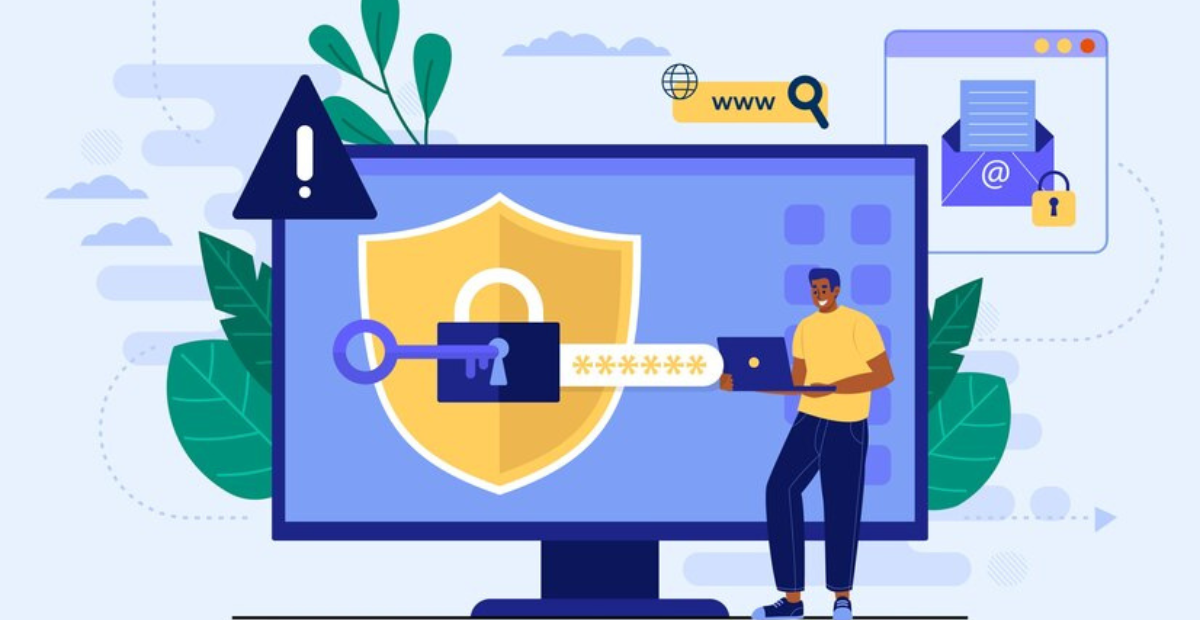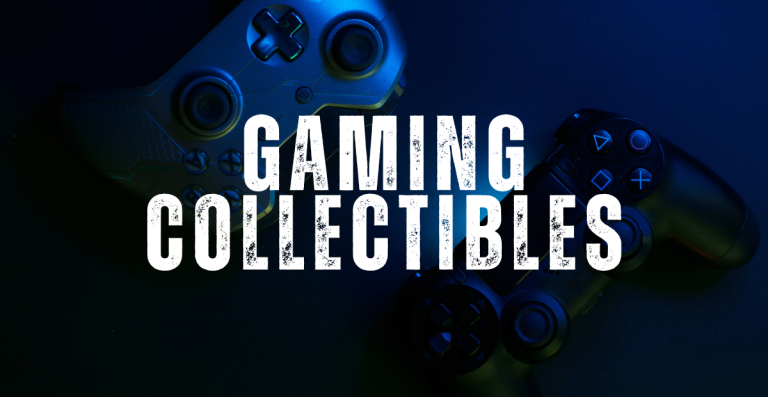Protecting Your PC and Online Accounts Essential Steps for Enhanced Security

With online storage of personal information, data breaches are increasing in frequency and intensity. In the past year alone, a data breach compromised millions of users’ private medical information, forcing them into monetary and emotional distress. Greater reliance on the digital world thus increases vulnerability to being a target of a cyber attack.
Digital convenience eases our living, but it also opens doors to insecurity. Smart home appliances and cloud storage create a lot of conveniences but will add risk in case things are not secured properly. In other words, the applications that help us enjoy the digital life are also the ones that grant entrance to cyber criminals.
We have collated useful, simple actions you can take to protect your devices, personal data, and online accounts, so that anyone can secure their digital life without being a techie. Joining us in some doses are some ways to ensure your digital safety.
Unseen Consequences of a Breach
Cyberattacks are associated with tangible losses. These could include identity theft, emotional distress, and long-term effects harming our reputation, personal relationships, and mental well-being. It is not just about financials; it is personal and pervasive.
Key Takeaways:
The principle of Keeping: This is the more efficient nature of easy security habits for effective staying safe, not one-time quick fixes, but little efforts from time to time.
It is a Layered Pool: In terms of security, it should be compared to an onion. There is a lot of layering you will have to put in place. You finally combine the different layers into a stronger, more integrated defense.
Not Rocket Science: For instance, even if you are not a computer whiz, you can still find these actions appropriate for practicing good online safety. This gives a buy-in to simple actions that would make everyone safe online.
Fundamentals of PC Security
In the present-day digital world, your PC is bare to threats that endanger your personal data and online safety. Some of the threats that are usual include:
Understanding Malware and Threats
Viruses, Trojans, Ransomware, and Spyware: They work in different ways, but all are meant to inflict damage. Viruses attach themselves to a host file and spread, while Ransomware holds your data ransom in return for payment.
Trojans look like they are legitimate software, but are a menace, while Spyware keeps track of your activities without your knowledge. A classic example is the WannaCry ransomware attack in May 2017, which hit thousands worldwide.
Exploit Kits & Zero-Day Attacks:
These threats require sophisticated skill and pose serious dangers. Some exploit kits inject malicious code into your system by exploiting known software vulnerabilities.
Zero-day attacks happen when hackers prey on vulnerabilities that are still unknown to software makers, which makes them especially threatening even to well-secured systems. Such attacks are usually not easy to trace; they might end up damaging everything on your data.
Crucial Defense Tools
These defense tools play their part and keep your account and PC safe.
Antivirus & Anti-Malware Software:
They’re the knife, the linchpin, the tools that you want to attack, defend, and destroy the feral viruses and malware. They scan the following files, email attachments, and websites for traces of bad code: Norton, Bitdefender, and Malwarebytes are some of the common choices that provide full protection, depending on various user needs.
Role of Firewalls in Protection
Firewalls are a barrier between you and the world: A firewall maintains and controls incoming and outgoing traffic of a computer network. Firewalls are either a separate physical device that is installed on your PC as software. Firewalls prevent unauthorized access and work as a crucial barrier against hackers.
Importance of System Updates
The simplest and most efficient way of securing your system is by updating the system software. It plugs security holes and closes crevices through which hackers can break in, including making sure that your computer has the latest security defenses.
Outdated software makes your device a target for cyberattacks. Think of updates as the shield that makes it impossible for hackers to be able to penetrate your defenses using outdated software.
Stay Secure on Public Wi-Fi
How to stay secure on public wifi?
Risks of Public Networks:
Public Wi-Fi is usually unsecured, exposing your device to hackers who can access the data you receive. Do not attempt to access sensitive sites such as banking or shopping sites while on public networks.
Well, Partially Secure Alternatives:
Access use of a VPN (Virtual Private Network) which can encrypt your internet traffic and safeguard the information from the eyes of other individuals when on public Wi-Fi. VPN usually hides the IP address, where online activities are hard for hackers to trail.
Routine Backups Lifeline when Breach Occurs
In the case of losing data through cyber attacks, malfunctioning hardware, or human errors, regular backing up is necessary. This gives one the features to retrieve files quickly and avoid permanent loss.
Automated Backup Tools:
It is the peace of mind associated with knowing that your backups will be taken care of automatically. Services like Google Drive, OneDrive, and, yes, external hard drives have got all that seamless backup for you. Automatic backups will ensure that you never lose any important documents in the course of events.
Securing Online Accounts
Most of the information on online accounts like passwords, numbers, etc, can be an easy target for hackers. You must secure your online accounts properly.
Creating and Managing Strong Passwords
Most people do not realize just how important really strong passwords are. Common errors include using simple passwords, such as “123456” or “password,” or reusing a single password on different accounts. Those simple passwords made it very easy for hackers to use tools that can quickly guess combinations.
The most high-profile example is that of Yahoo’s data breach in 2013. It turned out that more than 3 billion accounts were hacked, all because users had weak and reused passwords. This hack was responsible for surfacing all kinds of personal details and passwords that brought a lot of damage, both financially and to reputation, to users as well as to the company.
Build stronger passwords by going for a passphrase, which is a string of random, typically unrelated words (e.g., “PurpleTrainEatsPizza”). This technique extends the length of your password and makes it harder to guess, but still easy enough to remember.
Password Managers
A password manager is a specialized application used for securely storing all your passwords in a single encrypted repository. Thanks to such password managers, no longer will you be required to memorize complicated passwords for different accounts: a sole master key allows you to access all.
Password managers create, store, and auto-fill passwords, which prevents weak or repeated passwords from being used. Some password managers include LastPass, 1Password, and Dashlane.
Secure Storage
A secure storage of your passwords is essential, and you must keep them in a safe place because there is always a possibility of losing them or exposing them to others.
Multi-Factor Authentication Solutions
Multi-Factor Authentication (MFA) is the ability to gain access to something through more than a password. The attempt is usually to combine something you know (the password) with something you have (a phone or security token) or something you are (biometric factors such as fingerprints or facial recognition). This makes it very difficult for hackers to access your accounts without permission even if they do know your password.
Types of MFA:
Different forms of MFA are available:
SMS codes: These codes, sent to your phone using text message, offer another level of verification. However, SMS codes can be intercepted by hackers using SIM-swapping attacks.
Authentication apps (e.g., Google Authenticator, Authy): These apps pre-generate codes for you, and their codes are considered much more secure than SMS codes, as they do not rely on your phone number.
Biometrics: Fingerprints or facial recognition are types of biometric authentication that offer the best protection, as they are unique and very hard to duplicate.
How to Enable MFA?
For most of the common services, sign up for MFA:
Gmail and Outlook, or all the other email services: Just jump over to the security settings and put on the 2-Step Verification feature. You will receive a code on your mobile at the time of logging in.
Social Media such as Facebook, Instagram, and others: Just go to your account settings, then to the security part, and enable MFA using SMS, or with an authentication application.
Banking apps and financial services: Just log in to your account: security settings: follow the prompts for MFA setup via mobile app or biometric verification.
Recognizing Suspicious Activity:
The compromised account exhibits signs that unauthorized activity may have taken place. Some examples include
- Unauthorized login: Alerts from your service provider informing of logins from strange devices or locations.
- Strange messages: The emails or social media messages sent through your account that you did not initiate.
- Unexpected password change: Notifications that your password has been changed when you didn’t change the password.
Immediate Remedial Action:
This procedure should be followed immediately if you suspect your account has been compromised:
- Change your password to a strong, unique password (enable MFA if it had not already been enabled).
- Enable MFA as another layer of protection.
- Look at your settings for changes that might have been made—for example, connected devices or linked apps.
- Inform the service provider about the compromise and follow their instructions to secure your account and prevent any additional unauthorized activity.
Advanced Protection Strategies
Recognizing and Avoiding Phishing Attacks
Phishing is a very popular cyberattack and is one of the most dangerous. It usually starts with an email or text message designed to confuse and trick you into revealing personal information. Typical phishing examples would appear as messages claiming urgent action is required by your bank.
More advanced kinds, like spear-phishing, are highly targeted—they use your name, company, or recent activities to appear legitimate. A recent case of this would involve cybercriminals impersonating company executives to fish for login credentials from employees.
To stay safe, keep an eye on warnings and red flags, including misspelled email addresses, urgent/threatening language (“Your account will be locked”), unfamiliar links, and bad grammar. Reputable companies rarely ask for sensitive information by email.
Use security measures such as spam filters, browser-based protections, and anti-phishing plugins like Netcraft or Avast Online Security. These applications help detect and block suspicious links even before you click on them.
Enabling Anti-Virus Software
Almost every user has installed antivirus software, but very few remember it. On the contrary, antivirus and anti-spyware programs must always be up to date so that they can recognize and neutralize the latest threats. Cyber thieves keep churning out their changes in tactics, and outdated software will often fail to recognize new attack signatures.
Real Time Scanning
Another very underestimated powerful feature is real-time scanning. Instead of scanning your system once in a while, real-time protection continuously surveys your activity and interferes with any possible spread of a malware infection. This means that browsing and email result in safer downloads, less pop-ups, and proactive blocking of threats.
Utilizing Encryption for Data Security
Encryption protects data by rendering it unreadable except to someone with the proper key or password. Financial information, personal messages, or saved files are all information is subject to encryption so that they may be guarded against misuse even when intercepted.
There are two major types of encryption:
Full disk encryption applies to everything on a device. You could use tools such as BitLocker for Windows or FileVault for Mac, which are built-in options that are easy for the user to enable.
End-to-end encryption, as applied in certain messaging applications like Signal or WhatsApp, means that once the sender sends a message, it is encrypted in such a way that the content cannot be read by anyone other than the sender and receiver—even the service provider.
If an encryption setting is available in your device’s security settings, you can turn it on there. Most modern smartphones encrypt data by default, with additional manual enabling recommended on older devices. This presents an extra degree of protection.
Safe Online Behavior How to Protect Yourself While Surfing
Internet browsing requires an initial understanding of what one should be looking out for. Check for HTTPS in the website address; that means the site is using encryption. By clicking on the padlock symbol next to the URL, you can see some details of the website’s SSL certificate.
Never download files from unknown sources or pop-up ads. If you are not sure about any file, check it with your antivirus first.
For more privacy, use browsers or tools for secure surfing. A good option includes Brave, DuckDuckGo, or Tor. Add-ons such as uBlock Origin, Privacy Badger, and HTTPS Everywhere further help to block trackers and enforce encryption.
Protecting Family Devices Ensuring Online Safety for Everyone
Children are especially vulnerable online. Use parental controls to limit what they can access and set up kid-safe browsers that filter inappropriate content. Tools like Google Family Link and Qustodio let parents manage screen time, approve downloads, and monitor activity.
For shared family devices, create separate user accounts. This ensures each person’s data and preferences are private and reduces the risk of accidental exposure to malicious sites or downloads.






